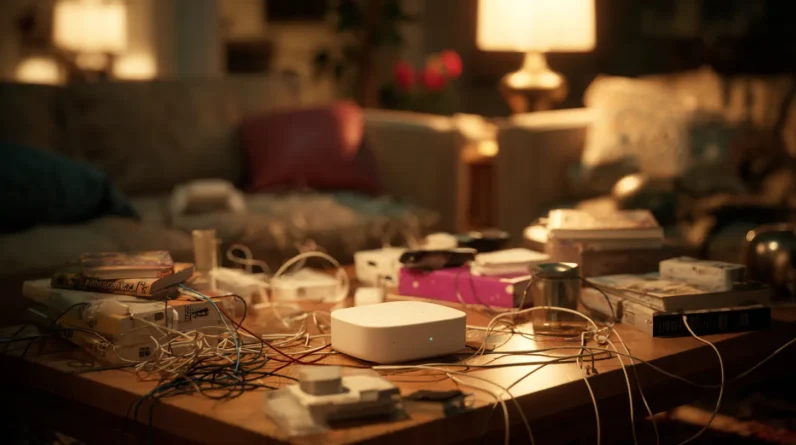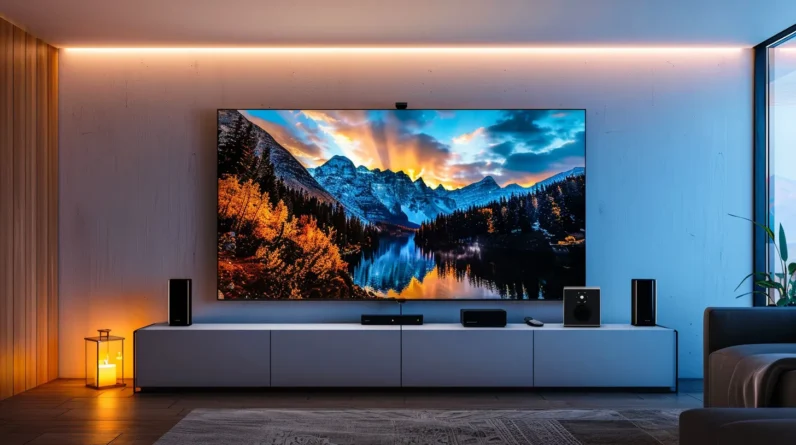
When setting up smart home devices, we recommend starting with essential, budget-friendly options like smart bulbs and plugs. It’s vital to choose devices compatible with your preferred ecosystem and support common wireless standards. Optimize your Wi-Fi network by investing in a powerful router capable of handling multiple devices. Prioritize security by using strong passwords, enabling two-factor authentication, and keeping firmware updated. Master the companion apps for each device to customize settings and create routines. By following these tips, you’ll create a seamless, secure smart home environment. Dive deeper to access the full potential of your connected living space.
Choose Compatible Devices Wisely
Three key factors should guide your smart home device selection: ecosystem compatibility, wireless standards support, and long-term interoperability. When choosing compatible smart devices, verify they work seamlessly with your preferred smart home ecosystem, such as Amazon Alexa or Google Home. Look for products that support common wireless standards like Zigbee, Z-Wave, or Wi-Fi to enhance interoperability across different brands.
We recommend researching user reviews and specifications to confirm that devices work together effectively. To future-proof your setup, consider investing in products that support the Matter standard, which aims to unify smart devices across ecosystems. Don’t forget to check if the smart devices you’re considering receive regular firmware updates to maintain security and compatibility. By prioritizing these factors, you’ll take advantage of a more integrated and efficient smart home experience.
Optimize Your Wi-Fi Network
A robust Wi-Fi network forms the backbone of any smart home setup. We recommend a minimum speed of 5Mbps for every 12 smart devices, with higher bandwidth for video cameras. Invest in a powerful router capable of handling 50+ devices for full smart home integration. For larger homes, consider a mesh Wi-Fi system to eliminate dead spots and guarantee extensive coverage. Regularly update your router’s firmware to maintain stability, security, and compatibility with the latest smart devices.
Position your router centrally to optimize signal strength and reduce interference. By following these steps, you’ll create a solid foundation for your smart home ecosystem. Remember, a well-optimized Wi-Fi network is essential for seamless connectivity and performance of your smart devices, enabling you to fully leverage the benefits of home automation.
Prioritize Security Measures
Security should be your top priority when setting up smart home devices. We can’t stress enough the importance of using unique, strong passwords for all your smart devices to prevent unauthorized access. Additionally, enable two-factor authentication (2FA) wherever possible to add an extra layer of protection.
To further enhance your smart home security:
1. Utilize a secure Wi-Fi network with WPA3 encryption, which offers superior protection against intrusions.
2. Regularly update firmware and software on all devices to patch security vulnerabilities.
3. Monitor device activity through companion apps to detect unusual access patterns promptly.
Start With Essential Devices
With security measures in place, it’s time to focus on building your smart home foundation. We recommend starting with essential devices like smart bulbs and plugs. These budget-friendly options, typically costing $10 to $30 each, offer immediate benefits and easy installation. Smart bulbs provide remote control and scheduling capabilities, allowing us to automate lighting based on our routines. Smart plugs transform traditional appliances into voice-controlled devices, granting us smartphone control over items like lamps and coffee makers.
When selecting devices, we must verify compatibility with our chosen smart home ecosystem, such as Amazon Alexa or Google Home. This guarantees seamless integration and functionality. As we become comfortable with these basics, we can gradually enhance our home automation by adding more advanced devices like smart thermostats or security cameras. This approach allows us to build a thorough system without overwhelming complexity.
Master Device Apps and Controls
Each smart device’s companion app serves as its control center, making mastery of these apps essential for excellent smart home operation. To enhance your smart home setup, follow these key steps:
1. Download the correct companion mobile app for each device from the appropriate app store.
2. Familiarize yourself with the app interface to leverage device customization options and integration capabilities.
3. Utilize device grouping features to control multiple smart devices simultaneously.
Regularly check for software updates to guarantee peak performance and security. Take advantage of automation features by creating routines or scenes that allow your devices to work together seamlessly. For instance, you can program all lights to turn off and doors to lock when you leave home. By mastering these app controls, you’ll maximize the potential of your smart home ecosystem and streamline your daily interactions with your devices.
Conclusion
We’ve navigated the labyrinth of smart home setup, emerging with a blueprint for success. Like Theseus conquering the Minotaur, we’ve armed ourselves with compatibility knowledge, Wi-Fi optimization, and security protocols. We’ve prioritized essential devices and mastered their controls. As we step into our digitally enhanced abodes, we’re not just inhabitants but conductors of a technological symphony. Our homes are now more than shelter; they’re responsive ecosystems attuned to our needs and preferences.







